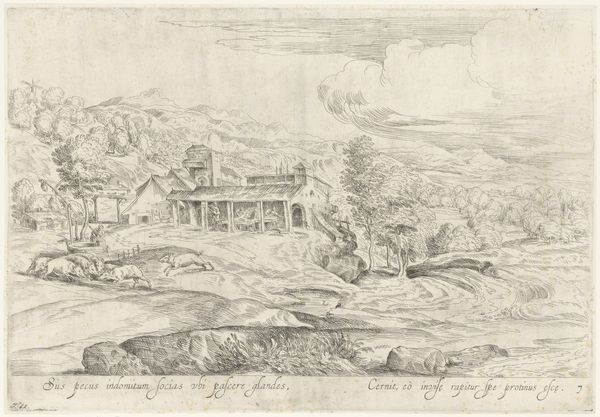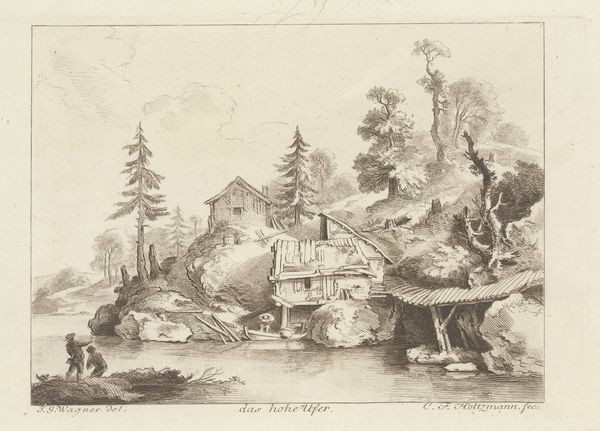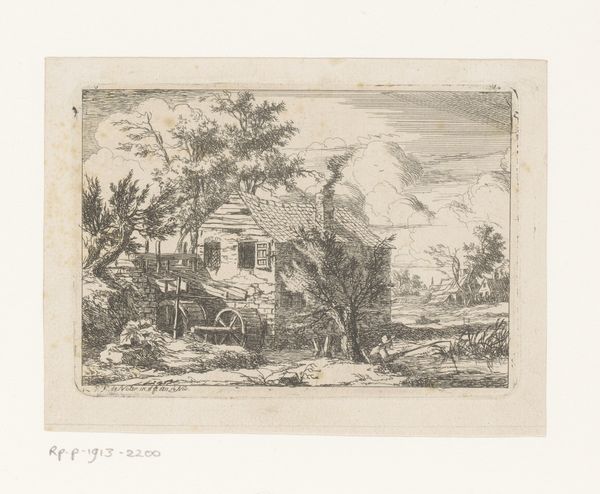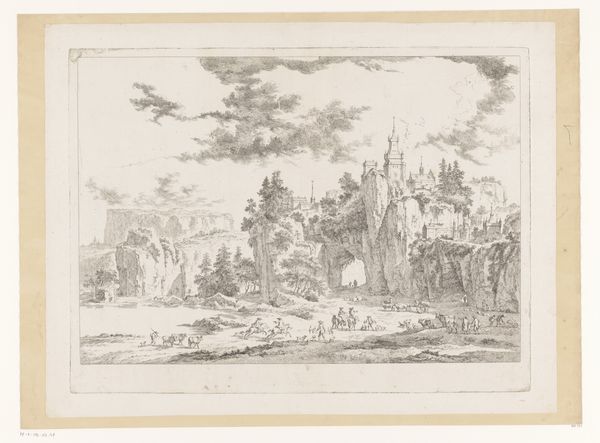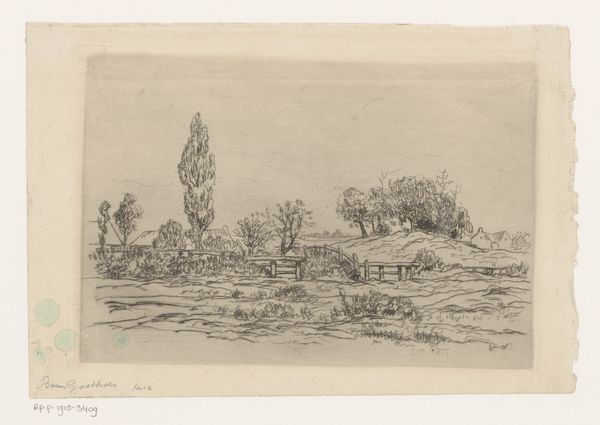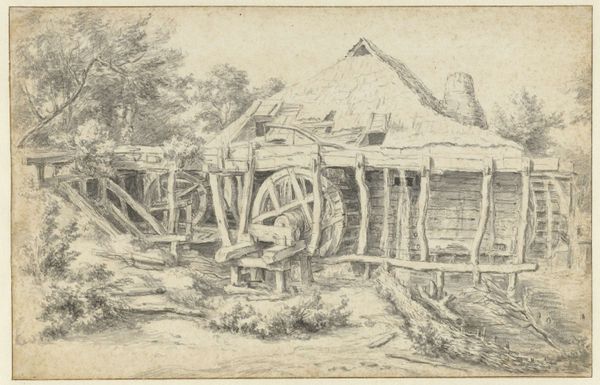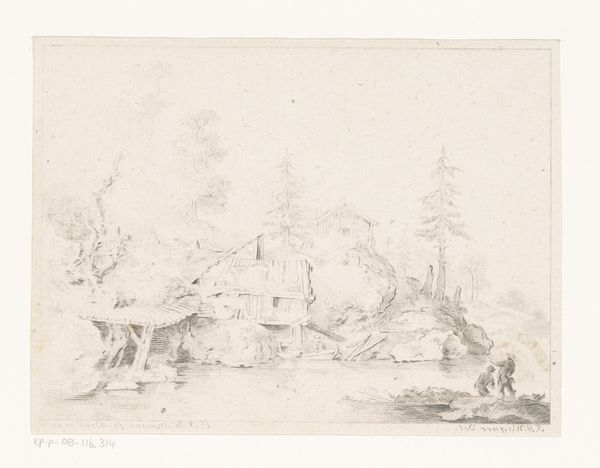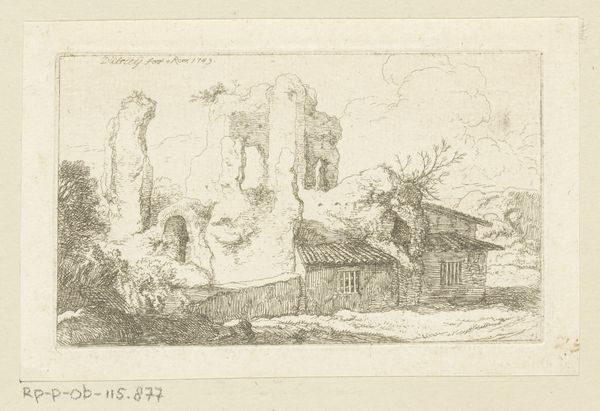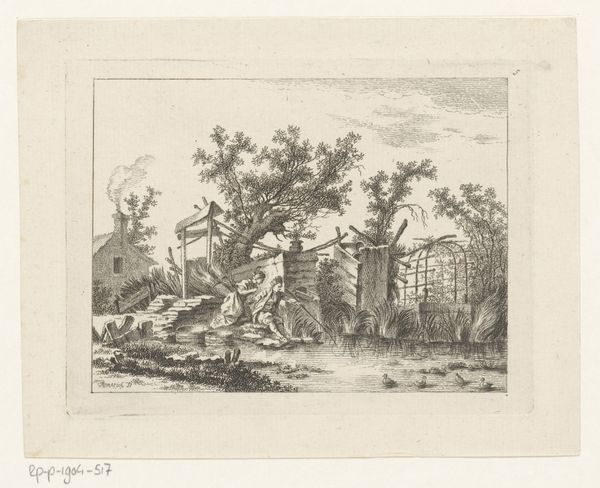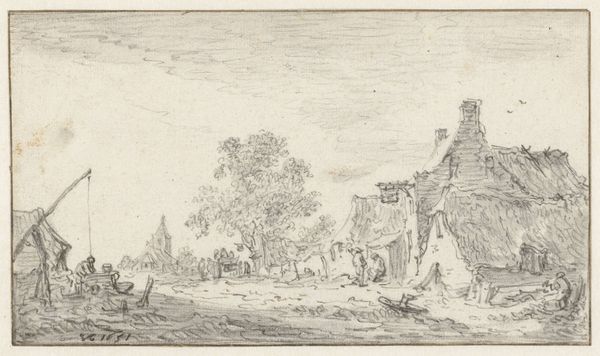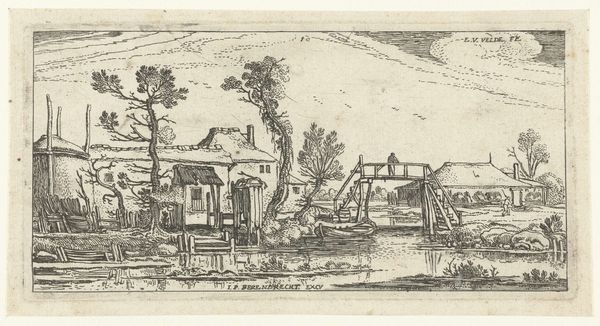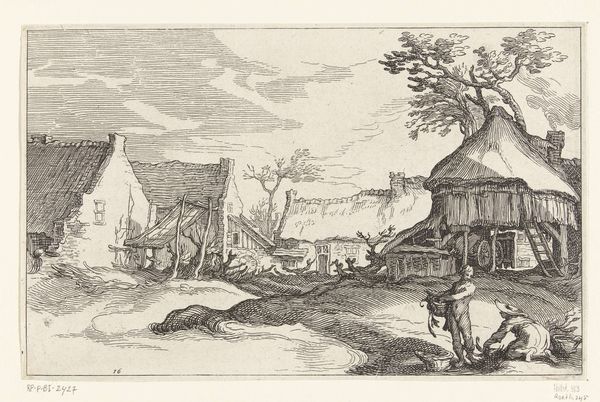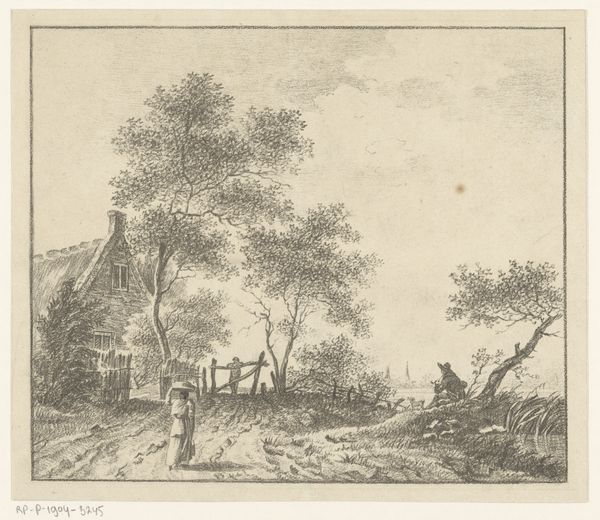
print, etching
#
dutch-golden-age
# print
#
etching
#
landscape
#
genre-painting
Dimensions: height 109 mm, width 188 mm
Copyright: Rijks Museum: Open Domain
Editor: This etching by S. Dupuis, called "Houten vissershut aan het water" or "Wooden fishing hut on the water," dates from around 1700 to 1750. It’s a very detailed scene, and somewhat melancholic, wouldn’t you say? All of these objects – boats, huts – seem broken or worn, like fragments of memory. What symbols do you see here? Curator: I see that very clearly! Consider the hut: not just shelter but a symbolic enclosure, representing community, family, perhaps even the self. But in its dilapidated state, it whispers of transience, of time eroding even the most solid structures, like Ozymandias’s broken statue. The broken boats serve the same function – ruined symbols. Editor: So the scene becomes less about a specific fishing hut and more about the broader ideas of time and decay? Curator: Precisely. Water, too, traditionally symbolizes the unconscious, the flowing, ever-changing aspect of life. Juxtapose that fluidity with the decaying permanence of the hut. What tensions arise for you? Do you see similar motifs in Dutch Golden Age painting? Editor: I do now that you mention it, a fascination with light, reflection, and the transient nature of things. Still life paintings always included decaying fruit. Maybe this is just a different rendering of "memento mori". Curator: Absolutely. The artist uses the genre of landscape to weave deeper psychological threads, reminding us of our place within a cycle of constant creation and destruction. This “fishing hut” becomes a tableau of existential reflection. Editor: I'm beginning to appreciate how seemingly simple scenes can carry so much meaning. Thank you. Curator: The pleasure was all mine. Symbolism provides an enduring richness.
Comments
No comments
Be the first to comment and join the conversation on the ultimate creative platform.
